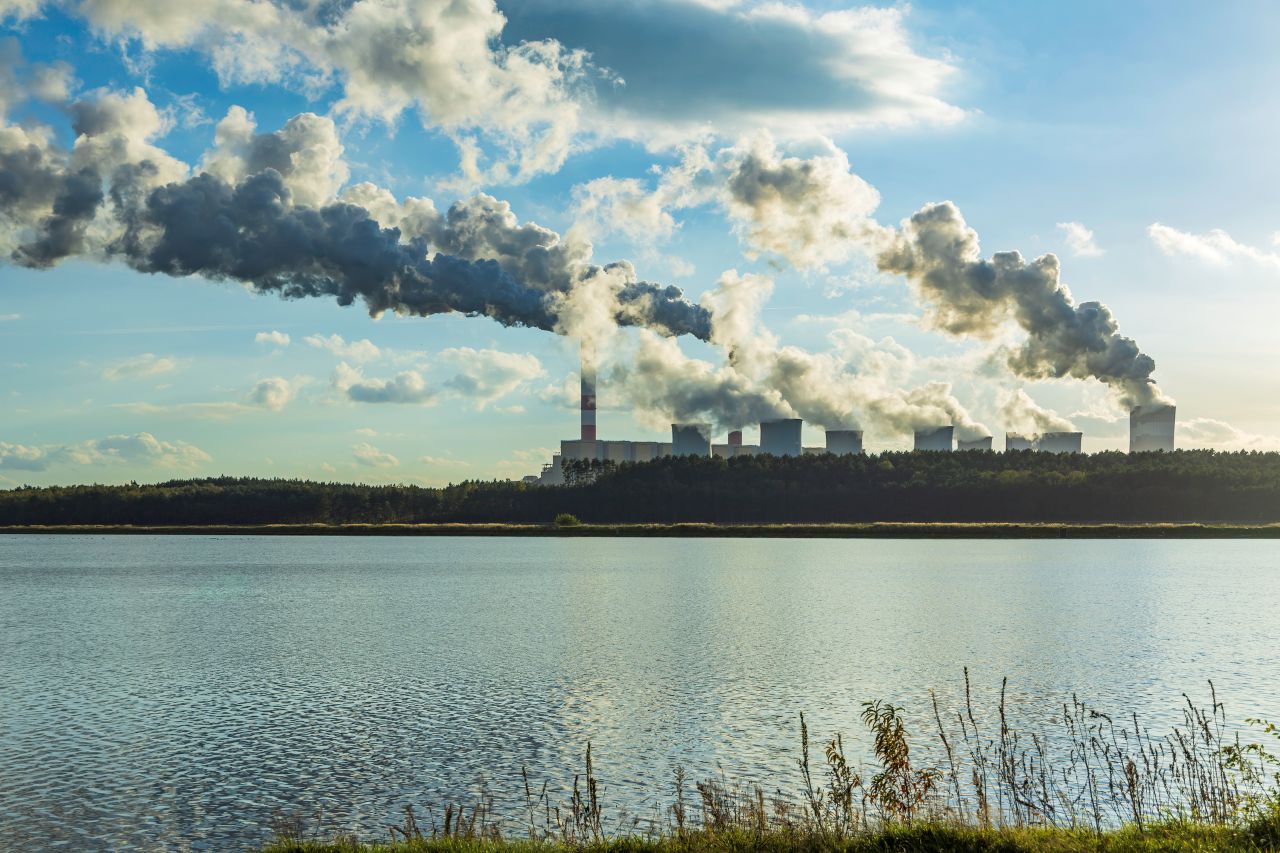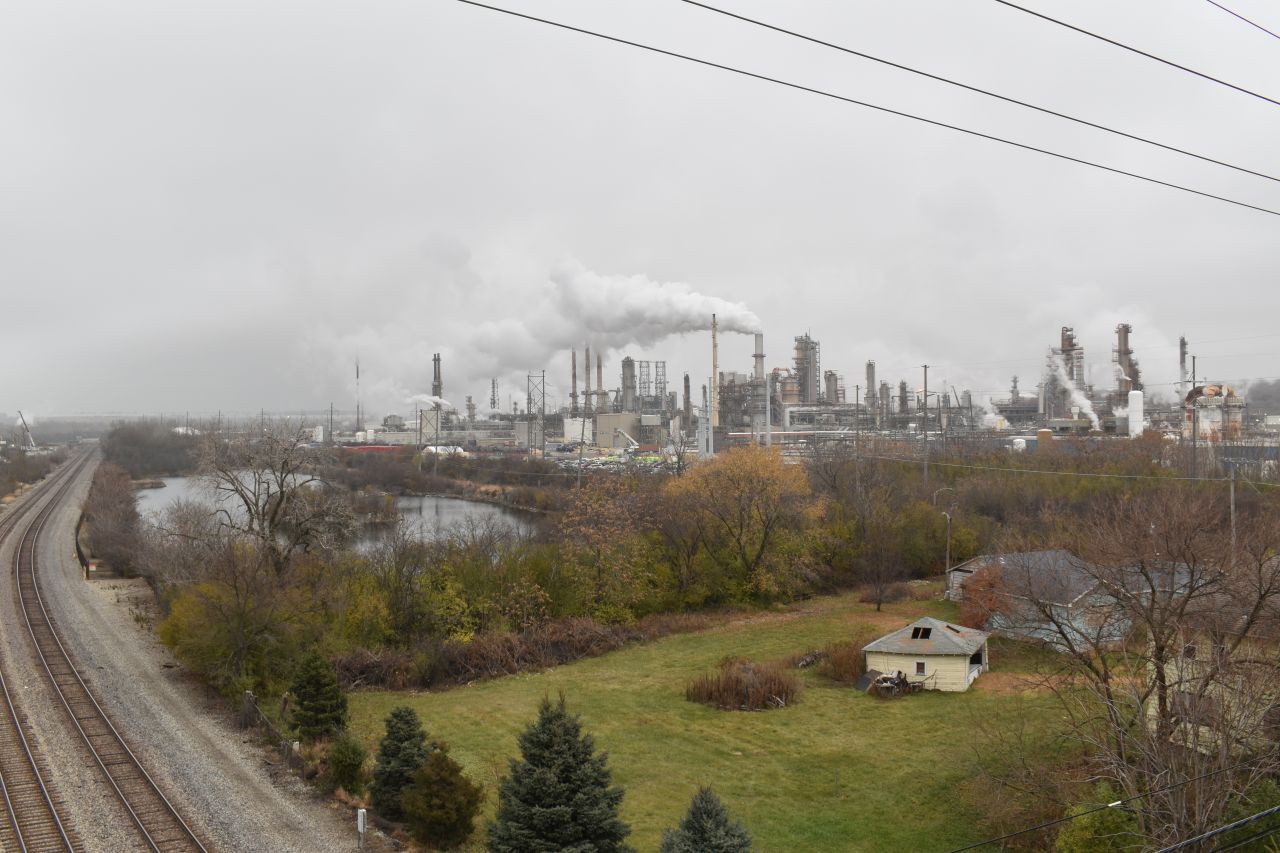Texas fishermen worry revived dredging project for bigger oil tankers will harm their catch

MATAGORDA BAY, Texas – Mauricio Blanco was guiding his shrimp boat through placid waters of a Texas bay when a call came in on the radio. The orange hull of an oil tanker loomed several hundred yards ahead. A crewmember on the tanker had hailed Blanco to tell him he needed to move out of the bigger ship’s path.
Blanco had been casting his net in the ship channel of Matagorda Bay, where shrimpers and oystermen share the waters with tankers and cargo ships coming to fill their holds at an oil terminal and other heavy industrial sites at the nearby Port of Calhoun County. Blanco steered his boat out of the way of the 600-foot-long tanker, which left his small vessel rocking in its wake.
More massive oil tankers will be headed through the channel if a dredging project and oil terminal expansion are completed as planned, including dredging through a Superfund site that could stir up mercury and other toxic substances. The Port and Army Corps of Engineers plan to dredge the channel 2.5 miles further into the Gulf of Mexico, 300 feet wider at the entrance, 150 feet wider along the main channel, and around 10 feet deeper to accommodate larger and more heavily laden ships.
Since the U.S. lifted a ban on exporting crude oil in 2015, companies have proposed a wave of new and expanded export terminals across the U.S., including at least 11 built or planned along the Texas and Louisiana Gulf Coast.
Some local residents fear that the dredging in Matagorda Bay will release contaminated sediment from the Bay bottom near a former Alcoa aluminum plant. Despite cleanup efforts, part of the bay remains tainted with mercury, which accumulates in fish, oysters, and shrimp and can cause brain damage.
Another concern is that the dredging and disposal of sediment from the bay will damage oyster reefs and seagrass beds that serve as habitat for sea life. The Corps in 2019 had estimated that the project would damage 130 acres of oyster reefs, though a 2021 study by Texas A&M University’s Harte Research Institute found that the channel expansion could threaten 839 acres of oyster reefs and 1,017 acres of seagrass. The Corps did not study the project’s effects on seagrass.
Blanco, who’s been catching shrimp, oysters, and fish in these waters for 36 years, does not see how the dredging, oil terminal expansion, and heavier tanker traffic will help the local fishing industry.
“I don’t see any benefits from this,” Blanco said of the channel expansion. “I get my benefits from catching shrimp.”


Plans to dredge the channel had been on hold since December 2022, when the Army Corps withdrew its dredging plans in response to a lawsuit by environmental groups and acknowledged that it had incorrectly estimated the total volume of materials to be dredged.
The Corps restarted the project in March and collected additional sediment samples in May that will become part of an additional study of environmental impacts. Corps officials say they are awaiting test results from the laboratory and will make them available to the public when complete.
Blanco thinks the Corps and the Port are indifferent to concerns of the fishermen, many of whom only speak Spanish or Vietnamese. He works seven days a week, arriving at the docks at 5 a.m. and setting out well before sunrise, often struggling to turn a small profit to pay himself and his deckhand, Marcus Cortes.
“I’m not against progress,” Blanco said. “Somebody’s got to make money, but the responsible way. They have to be responsible and liable.”
‘I love the Gulf’
Blanco learned the fishing business from his adopted American parents. At age 16, he left his native El Salvador, hitchhiking and walking his way thousands of miles on his way to Houston, where he planned to look for work. In Rockport, Texas, he met a couple who ended up taking him in and adopting him as one of their own.
His adopted parents helped him get a Social Security number and work permit and taught him their fishing trade. He worked with them for 12 years, until they got out of the business and he started fishing on his own.
Blanco eventually built his own boat by hand. Every morning, his boat churns out from a bait shop and dock at Port O'Connor, following a path Blanco practically knows by heart. Sometimes, he steers with his feet as he talks on the phone to his wife. Two screens over the captain’s chair show his route, marked with symbols warning boaters of shallow spots and undersea wrecks that might snag nets.
When he reaches a productive spot, he drops the net from behind the boat, dragging it along the bottom of the bay and scooping up marine life and pieces of the seagrass where they live. After about a half hour, he and Cortes haul the net back in and dump their catch into a box on deck with circulating salt water to keep the creatures alive.


That’s where Cortes meticulously sorts the shrimp from the bycatch. He dips a small net into the water-filled box and scoops out everything that made it into the net – shrimp, fish, squid, crabs, stingrays, even small sharks. Big shrimp go into one plastic basket for sale to tourists and restaurants, little shrimp go into another basket to be used as bait. Everything else goes back into the bay, unless it’s unlucky enough to be swallowed by one of the passing seagulls, pelicans, or dolphins that follow the shrimp boat like paparazzi.
The work is fast and strenuous, and Cortes’s fingers are covered in healed cuts and callouses from pokes by fish fins and the bony barbs that stick out of saltwater catfish. A 29-year-old from the far southern Texas coastal town of Port Isabel, Cortes first got into the business to spend more time with his father, who would often be away on long trips fishing in the Gulf.
“I love the Gulf,” Cortes said. “I think of it as a mother, because it always provides.”

When Blanco first started fishing, the price of shrimp was around $5 per pound, and diesel fuel – his main expense – cost around 33 cents per gallon. The price of shrimp hasn’t changed much, but the cost of diesel has risen to more than $3 per gallon.
Meanwhile, the oil and gas industry has grown in the area, especially the use of ports and offshore terminals along the Texas Gulf Coast to export oil and liquified natural gas.
In 2020, a company called Max Midstream purchased the Seahawk oil terminal in Point Comfort and an associated pipeline. The company first began exporting oil in 2021 but was hit with a wave of lawsuits alleging financial crimes and unpaid bills. Several remain pending in courts in Harris and Calhoun counties.
Despite the expensive litigation, Max Midstream has not withdrawn its plans to expand the Seahawk terminal, and the company has a deadline of Oct. 8 to begin construction. The expansion would increase air pollution from the terminal by nearly 85 tons per year of carbon monoxide and 22 tons per year of sulfur dioxide, both air pollutants that can harm people’s respiratory systems, according to records in Oil and Gas Watch. The expansion would also add 84 tons per year of nitrogen oxides and 86 tons per year of volatile organic compounds, both of which are tied to smog pollution that irritates and damages the lungs and is linked to conditions like asthma and heart disease.
The channel expansion project would allow larger oil tankers to access the terminal. The company has agreed to pay for 25 percent of the $218 million channel expansion project, Port director Charles Hausmann said at the meetings. The federal government will bear the rest of the cost.

Economic benefits versus environmental concerns
Blanco was among the local residents and environmental advocates who gathered in Port Lavaca last week for two meetings the Corps hosted. They were there to explain their efforts to sample the contaminated site and begin the process of studying the environmental impacts of dredging the channel.
At a smaller meeting on June 6, Corps officials explained that they had taken 29 core samples of sediment near the ship channel in May. They were looking for levels of mercury at or above 0.5 parts per million, a level agreed to between the Environmental Protection Agency and Alcoa after the company’s now-closed aluminum plant was designated a contaminated site under the EPA’s Superfund program in the 1990s. The company had dumped mercury in the bay in the 1960s and 1970s and was required to clean up most of the waste during the 2000s.
Even so, signs warning against fish consumption due to high mercury levels still stand around the bay. Diane Wilson, a former shrimper and longtime Port Lavaca activist, told Corps officials that the notion that people don’t fish near the contaminated area is a “baldfaced lie and everybody knows it.”
Corps officials assured attendees that they wouldn’t begin dredging if their latest round of testing showed high mercury levels. Jeff Pinsky, environmental branch chief at the Corps’ Galveston district, said that work would not begin unless those May sample results showed levels below 0.5 parts per million. If they find higher levels of mercury, the Corps will alert Alcoa and the EPA and will not begin dredging work until cleanup is complete, he said. The Corps estimates the sampling and testing will cost $2.8 million.
However, that 0.5 parts per million of mercury is well above the level at which National Ocean and Atmospheric Administration marine scientists have said could harm some bottom-dwelling marine life. That level, called the Lowest Effect Level, is 0.15 parts per million for mercury.
Ramon Roman-Sanchez, a Corps of Engineers chemist, said they were focused on the 0.5 parts per million because that’s the level that carries legal weight.
“We’re not comparing against that,” Roman-Sanchez said of the NOAA screening level. “We’re comparing against what was set back in the day by the EPA.”

Much of the discussion at both meetings focused on why the project is even necessary. Corps officials said their modeling shows that the dredging project will generate $20 million per year in net economic benefits. Bryon Williams, deputy district engineer in the Corps’ Galveston district, said the analysis is based on current economic conditions and “possibly some future.”
David Adrian, with the Matagorda Bay Pilots Association, said the main issue was to make the channel safer for all users. The association’s members are licensed by the State of Texas and are hired to guide large vessels through the channel, where navigation is tricky.
“As pilots, the whole reason the project started was for safety,” Adrian said. “Later on, [Port] customers found out we were widening the channel and they wanted to come. But the intent for this channel is for the safety of the vessels transiting the waterway.”
Blanco is skeptical. Last year, he took several Corps and EPA officials on a tour of Matagorda Bay on his fishing boat. They didn’t ask many questions and didn’t seem all that interested in the issues, he said.
“The way that I feel is that they went for a boat ride – that’s all,” he said.
Despite the challenges and the looming dredging project, Blanco said he plans to continue fishing until he can retire. At age 51, he doesn’t see himself working in any other field.
“This is my life,” he said. “I’ve got so much salt on me – I enjoy what I do.”
















